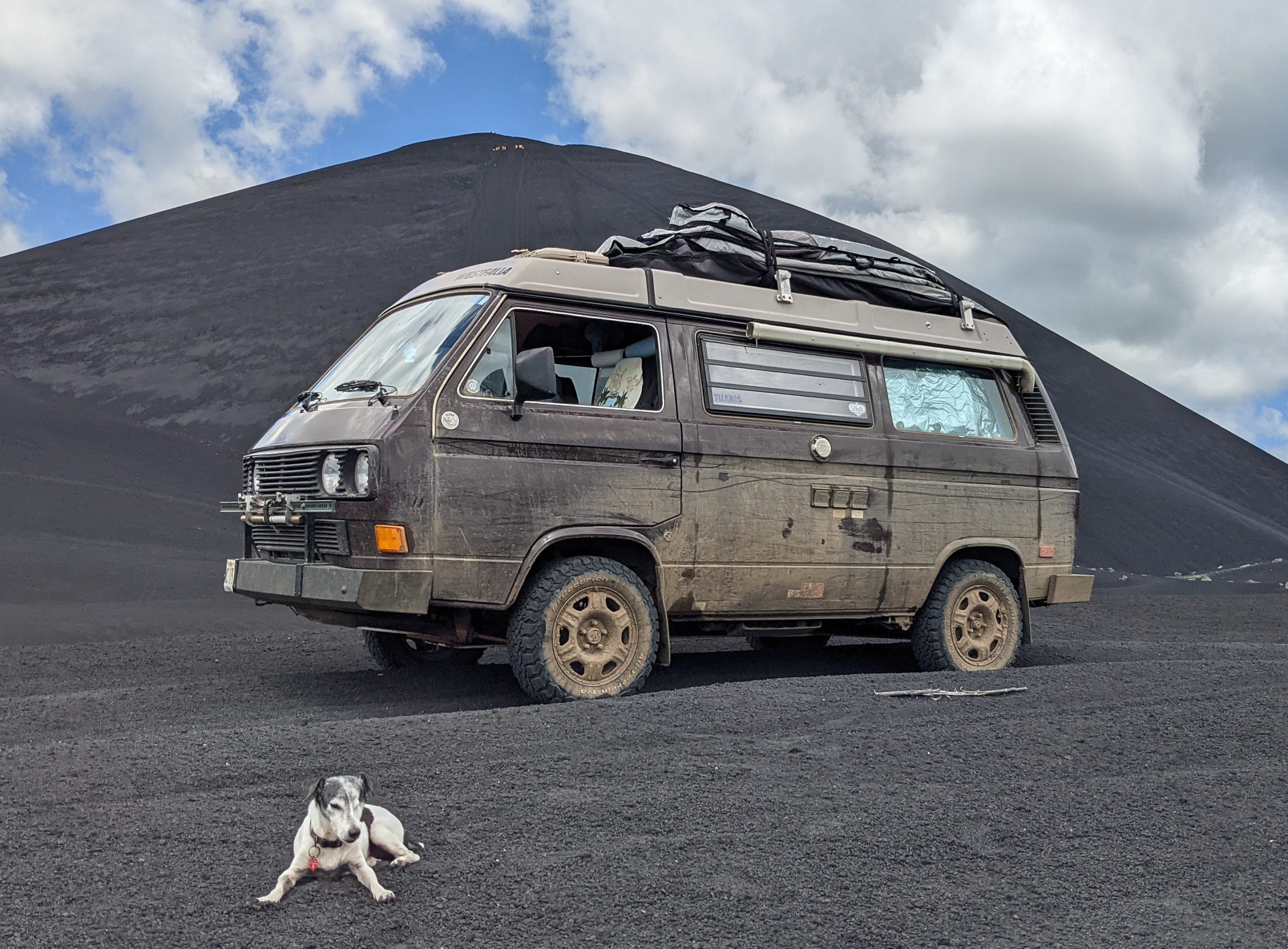The Volkswagen T3 Syncro (or Vanagon Syncro) is widely regarded as the ultimate overland rig. Characterized by insane power and torque and Rolls-Royce-esque refinement, the T3 Syncro is impervious to rust, offers unmatched all-terrain capability, a bulletproof engine, gearbox, and drive train, can achieve upwards of 55 mpg, and is conservatively 10 times more reliable than a Toyota Land Cruiser. So good, it’s hard to believe. As an impartial voice on this vehicle (check out my very own 1986 example and my piece on Guanabana Overland’s 1989 Syncro), I figured I was the person to feature one of the most impressive overland-ready Syncros in existence.

At first glance, this rig, built by Alika Motor Sports’ owner, Alika Vaquer, may appear decidedly understated compared to many Syncros online, but that’s part of the genius. This is what a Syncro looks like when specifically engineered for function and not “likes.” The van does not incorporate a huge lift, multiple rear swing-aways, gratuitous auxiliary lighting, excessive roof-mounted storage, or a winch but instead showcases the essentials and nothing else. The build’s simplicity reduces weight (improving fuel economy, relieving stress on components, enhancing off-road capability, etc.) while allowing the van to blend in with local traffic and thus avoid unwanted attention. However, there’s far more to this Syncro than meets the eye.

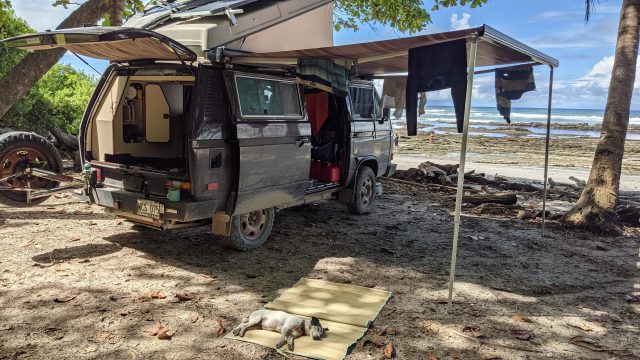
Behind the Build
Alika was born in Hawai’i but grew up in France. Later, he relocated to his birthplace, where he works almost exclusively on Vanagons (alongside some older Volkswagen water-cooled and air-cooled vehicles), and spends most of his free time chasing the surf. “I’m not a mechanic by trade, but through experience, I’ve become one,” he says. Alika’s mechanical knowledge was developed from driving a Vanagon daily for nearly 20 years. Previously, he worked a number of jobs, including as a sales rep, hardware store manager, plumber, and solar installer. It was only after he returned from traveling that he decided to work on Vanagons professionally. I’ve met many talented Volkswagen specialists, but Alika stands out as one of the most dedicated, experienced, innovative, and genuinely passionate mechanics I’ve ever had the pleasure of interviewing, and his Syncro is a testament to this.
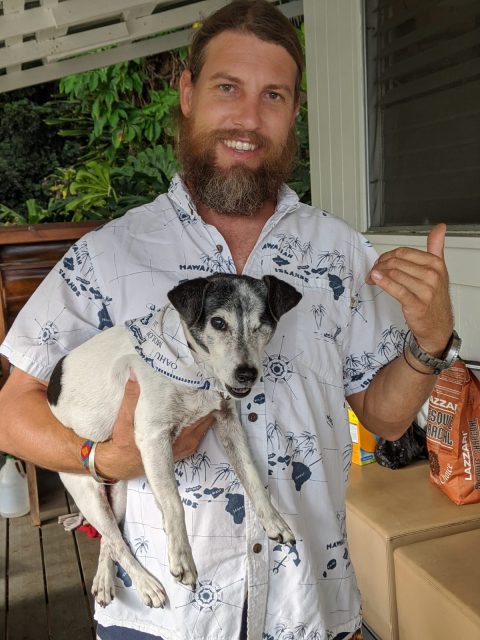
The Truck
I’ll reluctantly concede that my introduction to the Volkswagen Syncro was a little embellished. If I were completely honest, I’d admit that it’s not necessarily my first, second, third, fourth, and so on choice for overlanding. I was, therefore, interested to know precisely why Alika chose this vehicle for his overland adventures and what modifications he’s made to ensure it’s overland-ready.
“I’ve been driving Vanagons exclusively since 2002,” Alika tells me. “I know every single nut and bolt and can take them apart with my eyes closed. It was the obvious choice.” This statement serves as a reminder that the “perfect overland vehicle” is determined by so many subjective considerations, including the owner’s knowledge of a vehicle and ability to complete field repairs.

Hence, the 4WD “Syncro” was the perfect choice, sharing most parts with the two-wheel-drive equivalent but incorporating a robust four-wheel system created by Austrian company Steyr Puch. Alika always wanted a Syncro, so when a 1986 example came up on Craigslist for $2,500, he jumped at the chance. “It was in a bad way, really rusty, and needed a tonne of work. I then found an almost-new, 16,000-mile, original 1985 2WD Westfalia, in the color I wanted, so I decided to take out a loan, buy it, then transfer the parts from the Syncro onto it.”

Alika then addressed the Vanagon’s lack of power by replacing the stock WBX engine with a 1.9-liter TDI AHU from a 1997 Volkswagen Jetta. The motor was accompanied by an array of uprated parts that improved performance without compromising reliability. “A friend of mine used to work at Bosch, and had access to all their test equipment, so he built me a mechanical injection pump.” The primary focus was protecting the gearbox from excessive low-end torque (something that can cause premature gearbox failure in these vans), and this meant carefully managing power delivery. With this in mind, Alika decided to create “one of the most solid Syncro transmissions on the planet.”
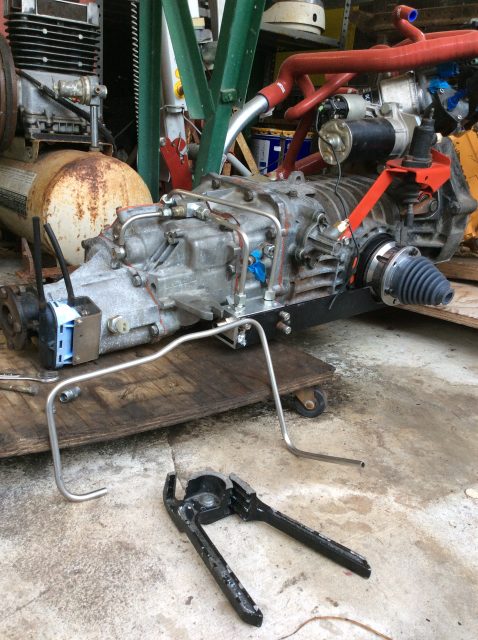
Alika is fixated on over-engineering all aspects of his van, and I can relate. Ultimately, the more parts you upgrade and service, the less (in theory) you have to worry about. Subsequently, he sought to reengineer the Syncro’s transmission to eliminate its weaknesses and ensure it was better suited to the 1.9 Tdi conversion.
One of the primary objectives was to create an intensive integrated cooling system, which provided forced lubrication to key areas of the transmission via a Weddle helical gear pump, Suzuki GSX-R650 cooler, and a Mishimoto thermostatic bypass. Alika explains: “I gun-drilled the main shaft to squirt oil in the needle bearings, integrated reinforced plates, fitted an active cooling system with a dedicated pump, and fit three filters (a magnetic filter with a 100-micron stainless steel mesh, a 20-micron paper filter before cooler, and a final custom SODO magnetic filter just before the manifold that distributes oil to key areas of the transmission).” In addition, he upgraded to Porsche 930 axles and specially lightened, prepped, and polished the CVs to reduce stress on the differential bearings.

This Syncro has the “holy-grail” spec, which means it’s a “triple-knob” Syncro, i.e., with front and rear locking differentials and a decoupler. Alika wanted to ensure this system was also bulletproof, so he swapped out the front locking differential internals for those from a rear differential, which are more robust. The van’s viscous coupling also needed replacing, so this was sent to Viscowerkstatt Kern, an Austrian company that accepts old VCs. In return, you receive one of their rebuilt examples, reconfigured for better four-wheel-drive performance. I also have one on my Syncro and can’t recommend the company enough.
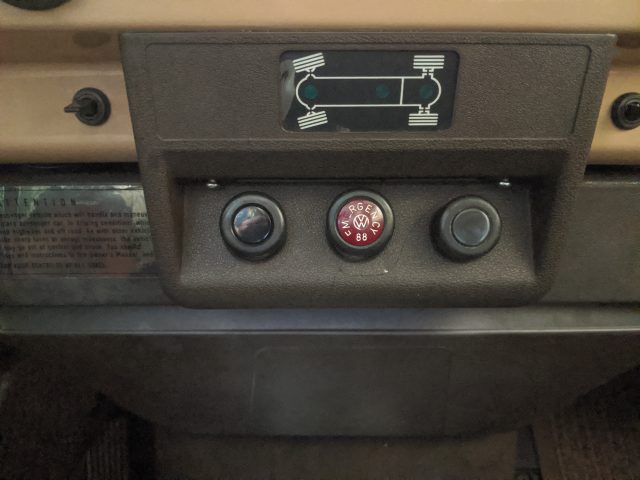
Volkswagen released two versions of the T3 Syncro, the more common 14-inch model and a rarer, more desirable 16-inch variant. It’s not uncommon for owners to convert or enhance their 14-inch Syncro using the often superior parts found on the 16-inch. Syncro CVs, particularly on the 14-inch, are prone to failure under stress, so Alika looked to the 16-inch model to eliminate this weak spot. First fitting Porsche 930 CV joints (lightened, prepped, and polished with chromoly cages), he then replaced the original front outer CVs with those from a 16-inch Syncro. But “because the 16-inch only had beefier front outer CVs, I fit Porsche 930 flanges and Audi 108-millimeter front inner CVs, the same size as those found on the rear of 16-inch Syncros.” Finally, he removed the standard Volkswagen CV boots with his own silicone alternative, which proved to be far more durable on his recent Central American adventure.

Alika was quick to point out that the build was a “challenging 10-year project, and progress was only made when I had time, money, and space.” He also added that “evil is in the detail,” and the only way to understand a vehicle’s shortcomings is to get out and use it in real-world overlanding scenarios “where there’s a lot more stress on components.” As a result, the suspension evolved gradually, initially consisting of polyurethane bushings, Viarouge shocks (the company designs shocks for the Dakar Rally and created a custom rebuildable set for the Syncro) and Smallcar springs. However, the springs began to sag over time and were replaced with Schwenk springs.

It’s common practice for owners to install a lift kit, and while this may look impressive, it can negatively impact reliability. Alika, fully aware of the risks, was careful to implement a gentle lift, which sits comfortably within factory tolerances. “I really like my ride height, and most of the time, you’re not the first person to explore off-road trails. Usually, most big stones have been moved by others, so a huge lift is simply unnecessary.”

If the trail becomes particularly rough or requires a degree of rock crawling, Alika’s Syncro benefits from comprehensive underslung armor. Forever innovating, he first imported the original Syncro turbo-diesel engine and transmission protection but then added HDPE Marine Starboard 1/2-inch high-density plastic to the original factory steel protection. This material is lightweight, won’t shatter, and is almost impossible to break or compress. “This was added because it’s lighter than alloy and slides on rock rather than digging in,” he says. “On my last trip, it proved to be invaluable when the going got tough.” Heavy-duty GoWesty bumpers provide additional protection to the front and rear.
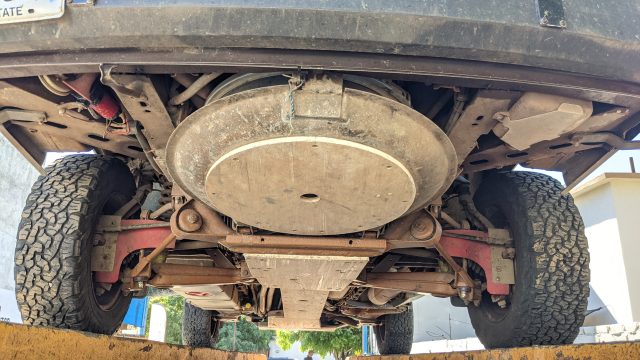

BFGoodrich KO2 All-Terrain tires are mated with reinforced Honda CRV wheels. The stock brakes are prone to overheating, so Alika fit rotors from a Volkswagen Sharan and Jaguar four-piston calipers up front. Additionally, he modified a VW T3 brake master cylinder to a 1-inch bore using BMW E32 parts and added a BMW E30 brake booster. He retained the rear drum brakes as they’re “easily serviced” but did integrate VW LT rear wheel cylinders. Alika says his next job is to find better brake shoe material to enhance braking power.
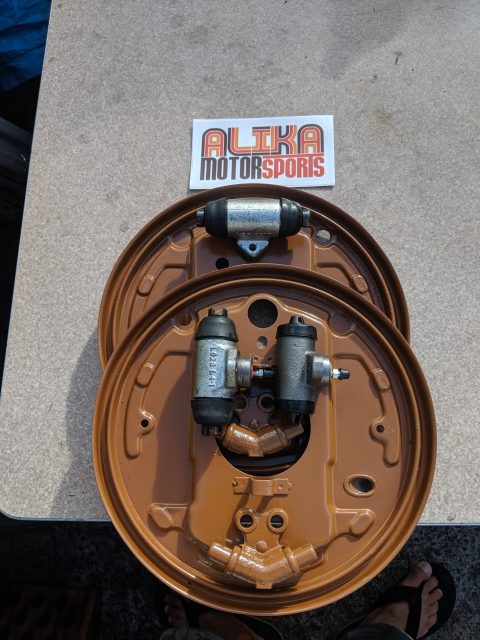
Exterior accessories are kept to a minimum, which reduces weight and helps to deter unwanted attention. On the rear, a wheel carrier, made from a repurposed aluminum BMX frame, conceals a 7-liter Mercedes fuel canister designed to fit inside the spare. Additionally, there’s a custom roof rack and snorkel, Swedish Taifun quad grille with Hella inner Rallye lights, a Fiamma F45s awning, solar panel, auxiliary LED lighting, and roof-mounted surfboards.
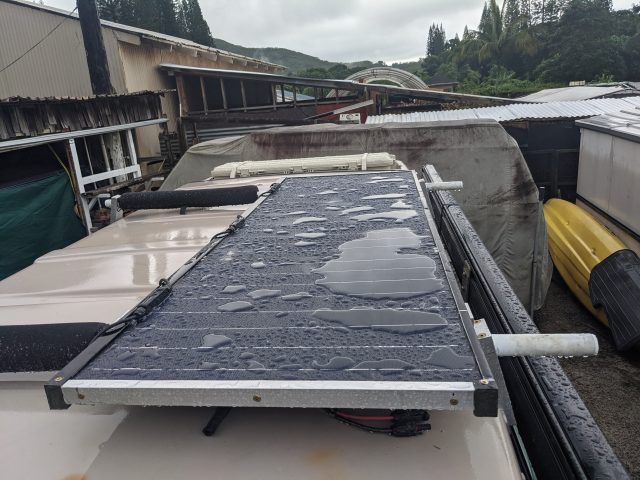
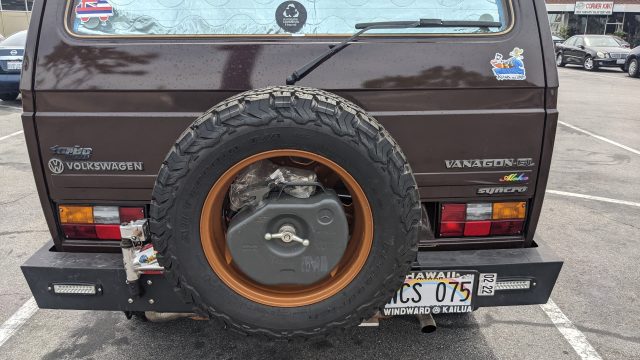

In the event of a recovery, Alika carries a Hi-Lift jack (which is also used as an emergency winch), tow rope, soft shackle, and Go Treads foldable traction mats. There’s also an in-dash air compressor, external hook-up and switch, and an underslung 8-liter aluminum air tank. “I feel confident repairing most issues at the side of the road; I carry a comprehensive toolset and many spare parts.” He explains that in most scenarios, this is enough to get him out of trouble. The only addition he made was a spare battery. “The biggest issue I had during my recent overland trip was a flat battery on a remote beach. The battery is pretty heavy, and I had to carry it two miles to the nearest village to charge, but I didn’t remember my tester. I walked back to the van and discovered it hadn’t charged enough, which meant hiking back and forth again for eight miles. Now, I always carry a spare.”

The Tdi engine returns an impressive 26 mpg and close to 480 miles of range from the factory tank, so finding fuel was rarely an issue. On the occasions where Alika plans to be completely off-grid, he carries an additional 40 liters of diesel in containers.
The Camper
The original Westfalia (or Westy for short) interior can be fitted to some Vanagons. This setup is highly prized, and while the materials are a little heavy by modern standards, they’re of excellent quality, are long-lived, and the layout is well considered. Furthermore, Westfalia models enjoy an extensive array of aftermarket accessories designed to enhance the stock interior from companies such as Venture Libre, GoWesty, Campervan Culture, and Slaughterhouse Customs.

It’s hard to improve on the original Westfalia design, so Alika made subtle changes. This included removing the old fridge and reconfiguring the original Westy kitchen unit to allow for a modern 75-liter Vitrifrigo compressor fridge. During that time, he added a more versatile flex hose showerhead faucet (RK Reich Carletta model) taken from a VW T4 Westfalia to replace the existing fixed tap. Additionally, he plumbed the factory 40-liter Westy tank into a new 60-liter Reimo underslung tank, thus providing 100 liters of freshwater.


“I’m not a big fan of modifying the original units, but I will concede that during my Central American journey, more boxes of stuff appeared on the floor,” Alika says. “I did turn the original underslung spare wheel location into extra storage, which now houses a waterproof drum that conceals parts and transmission tools. Besides that, the only change I’ve made is designing a number of secret secure locations to protect valuables.” Finally, a custom VW T2 jalousie window and a South African T3 sliding window were fitted to improve airflow to the living accommodation. Other notable interior comforts include air conditioning, electric windows and mirrors, and central locking.

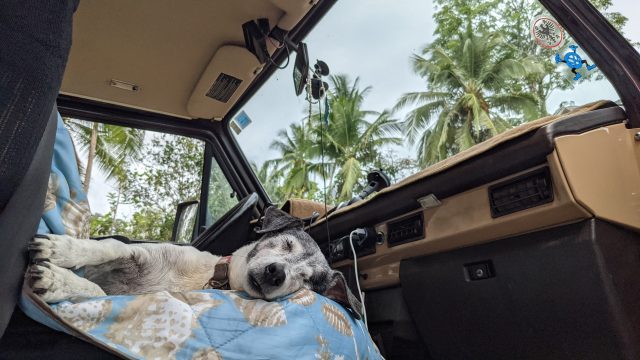
Alika does not require much power when traveling, just enough to run interior LED lights, the compressor fridge, and to charge his laptop. His setup consists of an 80-amp-hour LiFePO4 battery, custom 150-watt slimline solar panel (created by merging three EFTE 50-watt panels), Renogy DC-DC 20A charger, 140-amp alternator, and a bespoke Electrodacus solar controller, charge controller, and battery management system that’s completely customizable and extremely compact.

Life on the Road
Alika most recently completed a six-month Central American overlanding adventure, exploring Baja, mainland Mexico, Guatemala, Honduras, El Salvador, Nicaragua, Costa Rica, and Panama. Joined by his 16-year-old pup, Luna, (a truly adorable, local retired surf champion), the goal was to find the best surf locations Central America had to offer. “When I began the trip, I’d read a lot of fearmongering posts, but when I arrived, it was clear that most people were friendly. Once I reached mainland Mexico, I felt confident enough to stop using iOverlander, instead choosing to find my own spots.” Alika found that in areas considered to be “sketchy,” he often received kindness from strangers and that overall, he felt safer there than he had growing up in parts of France.

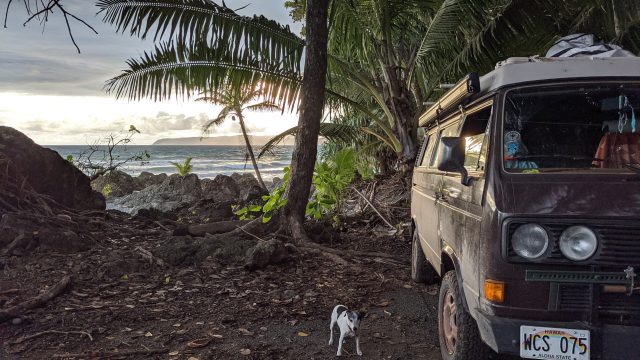
I asked if there were any particular routes that had challenged the Syncro, and he recounted a journey to a famous surf spot in Costa Rica called Witches Rock (Roca Bruja in Spanish). “The official access was closed, so I tried to find a different access point that would bring me close enough to hike to the surf spot, but there weren’t any alternative routes. I found myself navigating flooded areas (it was the rainy season) and crawling through the jungle on overgrown trails. In the end, I wasn’t successful, but it was a great adventure.” Alika is now back in Hawai’i, saving for his next overland adventure. “If I want to escape in the meantime, I have dual-citizenship and a van stored in France that I can use for European adventures.”

Where can we find you?
Instagram: alikamotorsports and alikaandluna

Specifications:
Power:
- 1.9-liter TDI engine (AHU code), utilizing factory 1.6 TD JX Syncro layout
- Audi CWA50 Pierburg charge cooler pump with Tecomotive controller
- Mercedes AMG S600 full aluminum cooler
- Tibo Reeb custom intake manifold/charge cooler combo
- Audi thermostatic bypass oil cooler system with magnetic filter
- KUB custom injection pump
- Hydraulic engine mounts
Suspension and Drive:
- Custom Viarouge shocks with rear limiting straps
- Schwenk springs
- Kern viscous coupling
- Front and rear locking differentials with decoupler
- Slip yoke driveshaft
- Rebuilt and reinforced transmission
Wheels and Tires:
- Reinforced Honda CRV steel wheels, 16 x 6.5-inch
- BFGoodrich All-Terrain KO2 tires, 215/70R16
Recovery and Armor:
- Factory Syncro turbo-diesel engine and transmission protection
- Additional HDPE Marine Starboard plastic plating, 1/2-inch
- Hi-Lift jack
- GoWesty bumpers
- Go Treads foldable traction mats
- Soft shackle, tow strap, axe, machete, and spare battery
Accessories:
- In-dash air conditioning
- Air horn
- Taifun Swedish quad grille w/ Hella inner Rallye lights
- Auxiliary LED lighting
- Vitrifrigo compressor fridge, 75-liter
- Fiamma F45s awning
- Three 50-watt EFTE solar panels
- 80-amp-hour LiFePO4 battery
- Custom roof rack
- Electrodacus Solar BMS, Renogy DC-DC 20-amp charger, and 140-amp alternator
- Custom Volkswagen T2 Jalousie window
- Volkswagen South African T3 rear sliding window
- In-dash air compressor, external hook up and switch, and underslung Land Rover aluminum air tank (8-liter)
- Zada Tech digital display for engine gauges, 4.3-inch
- Westfalia propane tank, 3-gallon (with additional removable tank, 1-gallon)
Fuel capacity:
- Stock tank, 70-liters (18.5-gallon)
Water capacity:
- Westfalia tank, 40-liter
- Reimo secondary tank, 60-liters(plumbed into Westfalia)
Weight:
- 2,770-kilograms (6,107 pounds) fully loaded
References:
- The Samba – thesamba.com
- T3zone – t3zone.fr
Our No Compromise Clause: We carefully screen all contributors to ensure they are independent and impartial. We never have and never will accept advertorial, and we do not allow advertising to influence our product or destination.


